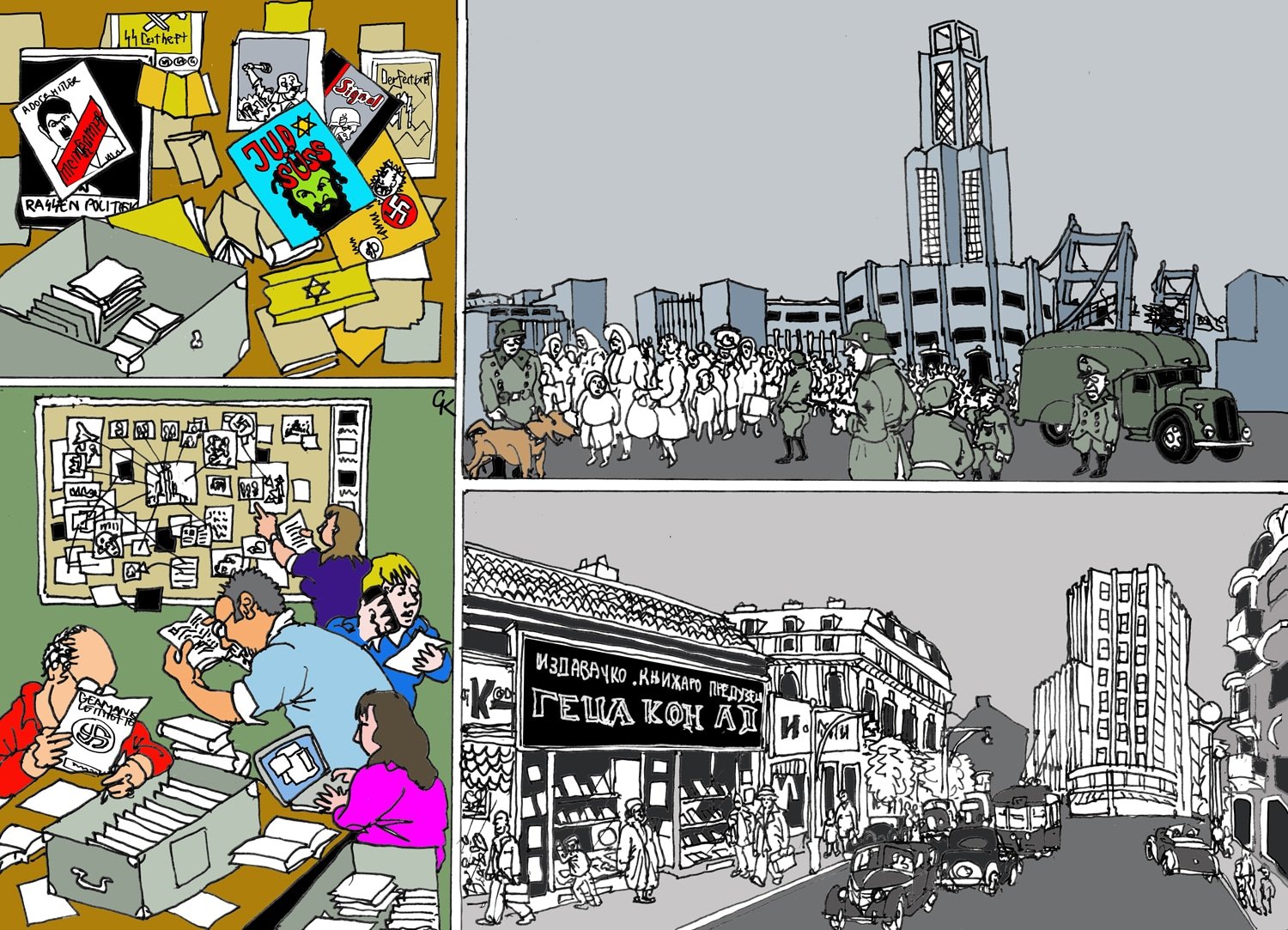Novel text


-
1

-
2

One day in the historical archives of Belgrade
A couple of years ago, the archivists at the Historical Archives of Belgrade discovered 6 boxes among old unsorted piles hidden behind the shelves in a far dusty corner of the depot.
When they removed the lock from the first box, a 14-years old girl opened her big eyes and looked at them with a smile from a pile of old papers:
“Halo, my name is Ester, and I waited patiently for 70 years to tell you that once I used to be alive!”
When the archivists dug deeper in the box, they found that Ester was a student at the First Belgrade Gymnasium, that she once had a lot of friends, and a loving family. “We were living in the Dorćol neighborhood in Belgrade, and I used to dream about becoming an actress”, Ester told them.
Suddenly many more voices emerged from the box, and then from other boxes around. The entire archive depot was echoing.
The boxes found in the Historical Archives of Belgrade revealed forgotten, unprocessed and unlisted documentation about several thousands Belgrade Jews killed at the Old Fairground (Sajmište) concentration camp.
During the WWII, in autumn and winter of 1941 the Old Fairground was a place where Nazis and their helpers brought the Jews from around occupied Serbia, and then killed all of them using an infamous gas-van known as “dušegupka”.
On 29 May 1942 Franz Rademacher, Chief of the Jewish Department in the German Ministry of Foreign Affairs in Berlin, stated that the “Jewish question in Serbia was solved”. What he meant was that almost all of the Jews in Serbia were killed.
From that day, the Old Fairground remained a symbol of total destruction of the Jews in Serbia.
Inspired by the discovery of the boxes with forgotten documents, archivists of the Historical Archives of Belgrade started a complicated and long work. Like detectives, the archivists were combining the newly found materials with other pre-war archive funds: school registers, membership lists of sport-club associations, employees lists, properties registers, old photographs, old letters, newspaper clips… Day after day, piece-by-piece, the archivists were putting together a huge puzzle.
Together with their colleagues historians, they were determined to once again reveal the pre-war Belgrade with our Jewish neighbors, friends and schoolmates. Like time-travelers, a vivid and colorful picture was appearing in front of their eyes.
Once
Once upon a time, the Jewish community used to live together with Serbs and others in Belgrade, and in many other cities around Serbia. The pre-war Belgrade was a vivid and colorful city. The Jews played an important part in its development, its culture, and all other segments of life, as all other citizens that loved their city and their country. But this entire world was cruelly destroyed in the largest crime that mankind has ever witnessed – the crime of Holocaust.
Here, you can find some of the stories about the pre-war Belgrade and other places in Serbia, and about the dreams, friendships, lives and deaths of some of the young people that once used to live here…
